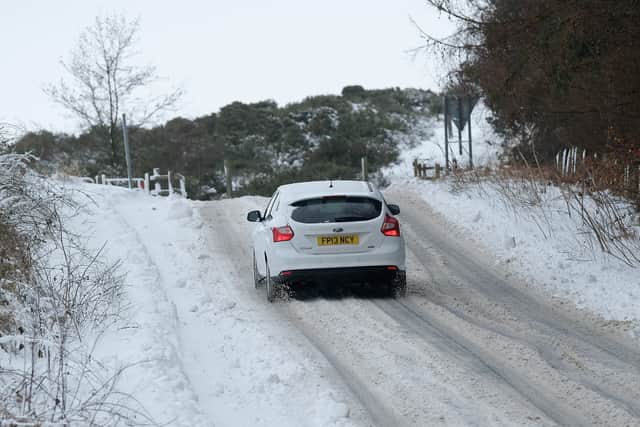Driving in the snow: Top tips to keep safe behind the wheel in wintry weather
and live on Freeview channel 276
Roads can be dangerous during extreme weather conditions, which can lead to accidents.
As the Met Office issue yellow and amber weather warnings across the UK, we are expecting to face snow and ice over the coming days.
Advertisement
Hide AdAdvertisement
Hide AdMotorists may be worried about driving in these particular weather conditions, therefore we have five winter driving tips which may make you feel a bit more comfortable when driving on the road.
Here are the top winter driving tips every motorist should be aware of:
1. Think about your stopping distance
When a road surface becomes slippy, it makes a vehicle unable to break as quickly as it would be able to on a dry surface. For this reason, you should leave a gap between you and the car in front up to 10 times the normal recommended braking distance. Ensure you give yourself at least 10 seconds to come to a complete stop.
2. How to correct a skid on ice
If a vehicle skids on ice, the person behind the wheel can often panic, which is why it’s important to understand what to do in this situation. Remove your foot from the accelerator as the more power you apply, the more likely your vehicle will continue to skid. Steer the wheel in the direction of the skidding vehicle, so, if the vehicle is sliding to the left, steer to the left. This will help bring the vehicle into a straight line and out of the skid.
Advertisement
Hide AdAdvertisement
Hide Ad

3. Drive in a higher gear in snow and ice
When driving in snow, you should drive in as high a gear as possible, even if you’re driving at a slower speed. Tyres grip less efficiently in wet and cold conditions, so by driving in a higher gear, you will keep your vehicle’s revs low and prevent your wheels from spinning out.
4. Drive for the conditions, not the speed limit
Speed limits are the maximum in ideal driving conditions, meaning it’s not always safe to drive at this speed in bad weather. On icy and wet surfaces, tyre grip is greatly reduced making braking distances much longer. Because of this, drivers should adjust their speed based on the surrounding conditions and not try to match the speed limit.
5. Use your fog lights when necessary
Fog lights are installed to make your vehicle more visible in poor visibility conditions such as fog, heavy rain or snow. If visibility is less than 100m, put your fog lights on. Remember to switch your fog lights off when visibility improves as leaving them on could land you with a £50 fine.
Comment Guidelines
National World encourages reader discussion on our stories. User feedback, insights and back-and-forth exchanges add a rich layer of context to reporting. Please review our Community Guidelines before commenting.